ELECTRIC, WITH AN EDGE
Daelim’s 3000 kVA (3 MVA) pad-mounted transformer is made to supply dependable and reliable power circulation across numerous applications, consisting of industrial sites and high-demand environments like EV charging stations and information facilities. Its durable engineering and tailored design make sure optimal performance and reduced operating costs.
Main Voltage Ratings: Ranging from 34.5 kV to 12.47 kV, the transformer suits several arrangements, making it versatile for various network needs.
Additional Voltage Ratings include alternatives like 208GrdY/120 and 480GrdY/277, ensuring compatibility with both low and high need systems.
An adaptable H.V. TAP RANGE of ± 2 × 2.5% permits exact voltage changes, while the CONNECTION TYPE choices such as Dyn11 and YNyn0 accommodate different network architectures.
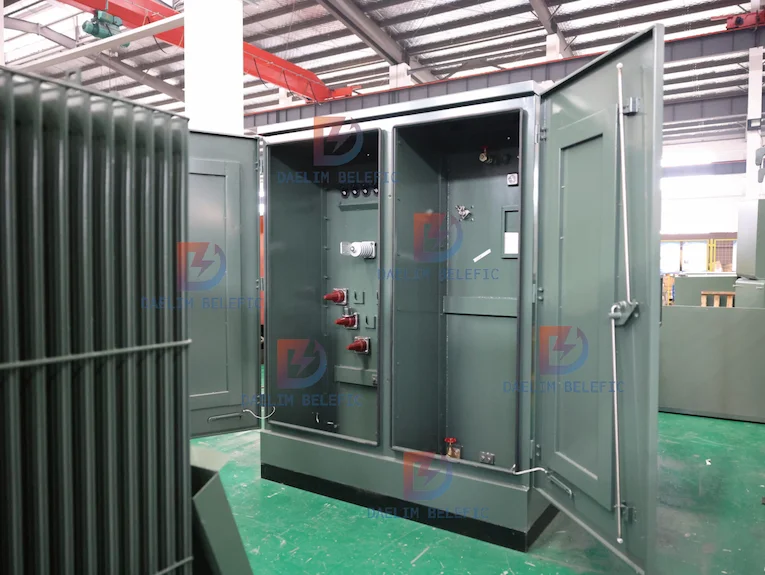
The transformer is designed with either a loophole feed or radial feed arrangement, utilizing light weight aluminum winding elements to boost efficiency without adding additional weight or expenditures. It is constructed for safety and security and durability, enclosed in a steel framework with a NEMA 3R score to hold up against various weather. Being air-cooled and fanless, this transformer’s design makes installment and maintenance uncomplicated.
The transformer is constructed to function successfully with a 65 ° C temperature increase, ensuring it continues to be efficient and lasting even when operating at full capability. With an optimal power capacity of 3750 kVA, it uses versatility in managing and distributing power. Its reliable efficiency leads to notable energy preservation, lowered warm output, and reduced total possession expenses.
THe unit is geared up with rise arresters and features a full-length steel barrier that separates high voltage and reduced voltage compartments, enhancing operational safety. Biodegradable air conditioning liquid (grease) is made use of, supplying a safer, much more reliable performance contrasted to typical mineral oils. The system lacks rapid increase relays but includes detailed mistake pressure gadgets to ensure stability and security throughout variations.
Daelim’s transformer is ideal for a large range of applications from electrical power circulation in public utilities to demanding industrial settings. Its durable layout and adaptable functions amke it ideal for sectors such as renewable resource manufacturing, data centers, adn army installations, ensuring trustworthy power shipment in critical infrastructures.
The 3000 kva (3MVA) transformer is carefully created to stick to the CSA C227.4 Standard, showing its conformity withh strict industry laws. With an excellent power efficiency rating of 99.37%, it not only fulfills yet goes beyond the CAN/CSA802.1 Standard. Such efficiency is paramount in decreasing functional expenses and ecological effect, making it a recommended choice for energy-conscious enterprises.
At the core of its layout, the transformer includes a key voltage of 3-phase 27.6 kV and an additional voltage configuration of 3-phase 600/347V, particularly customized for effective power circulation in Ontario. Enhancing its adaptability is a 5-position tap changer on the high-voltage side, providing setups from 26.22 kV to 28.95 kV. This enables precise modifications to match varying functional needs, consequently maximizing efficiency and integrity.
Safety and security is critical in the layout of the 3000 kva (3MVA) transformer. It is equipped with a 4-position loadbreak switch and does not have a security fuse, which is a noteworthy design choice aiming to improve procedures while guaranteeing security. Additional safety and energy features include three gaugeless get in touches with, a stress safety valve, and an oil charging and unloading shutoff, every one of which improve control and functional comfort.
More boosting its functional capabilities are the 6 bayonet integrates and current-limiting integrates that shield versus overcurrent problems. The high-voltage side’s flexible setups vary from 11847V to 13094V, fitting varied electrical requirements. Additionally, the transformer’s instrumentation is carefully made for protective features and remote tracking, promoting real-time condition updates and ensuring long-lasting functional stability.
Created with premium copper for both low and high voltage windings, the transformer offers exceptional conductivity, density, and sturdiness. It makes use of FR3 grease as an insulating fluid, not just for its outstanding thermal homes yet likewise for its biodegradability, highlighting the commitment to environmental sustainability. With an oil capability of 435 gallons and a total weight of 13,889 pounds, this transformer is constructed to be both durable and environmentally friendly.
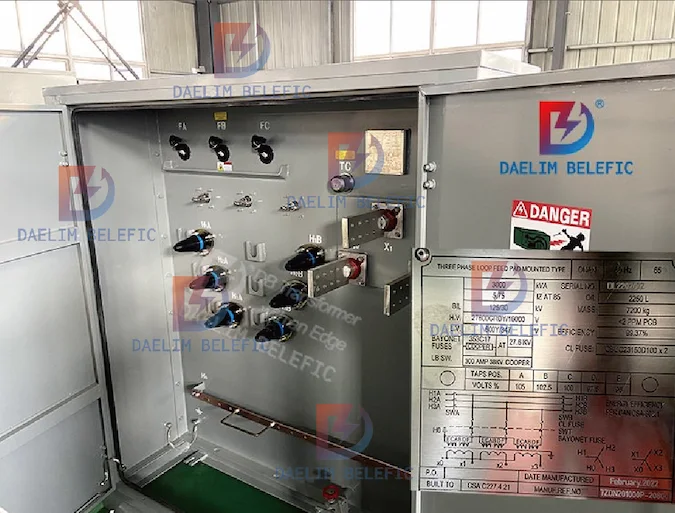
Kilovolt-amp(kVA) | 3000 |
Weight | 7200kg |
Size | H 1900mm x W 2080mm x L 2100mm |
Impedence Percentage | 9 |
Number Of Phases | Three Phase |
Tank and accessories | 1660kg |
Oil Weigh | 2250L |
Total Weight | 7200kg |
A 2000 kVA Transformer is an electrical device that may transmit power from one circuit to another, or more channels. More significantly, this has a 2 MVA cast resin transformer, which produces a changing magnetic flux by altering the current in any coil of the 2000 kVA transformer.
For over 15 years, Daelim has been designing, producing, and manufacturing high-quality electric goods and equipment. Proven to deliver reliable products and perfect service, Daelim becomes internationally known. More significantly, the company is known for different types of transformers, one of which is a 2000 kVA Transformer.
An electrical transformer is a tool that converts alternating electricity from one voltage to another. It works on the magnetic flux principle and may be configured to “step up” or “step down” voltages. And the magnetic flux in the 2000 kVA transformer can cause different electromotive forces in any other coils base. Without a metallic link between these circuits, energy can be transmitted across multiple coils of the 2000 kVA transformer.
A 2000 kVA transformer is placed in areas where there is no room for a closed enclosure. All connection points in this transformer have a total load current that has been safely contained in a grounded metal casing. Typically, the 2000 kVA transformer is often utilized with underground electric power distribution cables. It can be used to serve one large building or many homes.
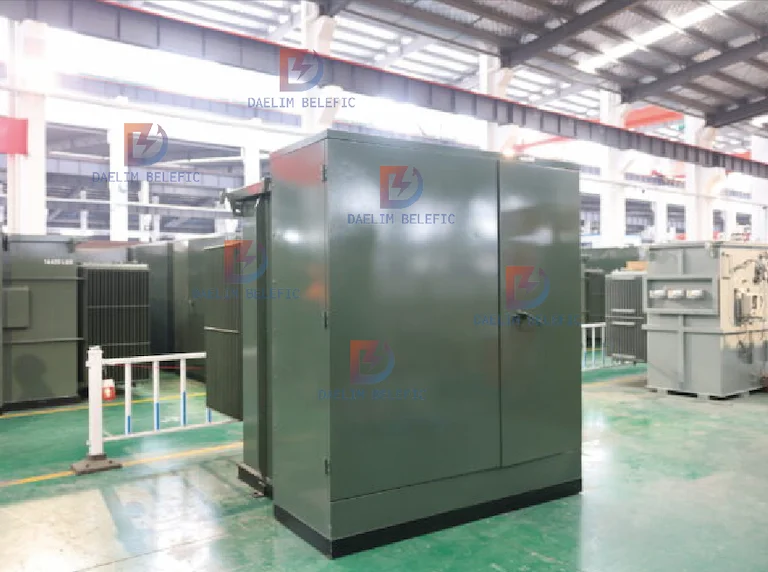
The kVA rating, which stands for Kilovolt-Ampere, is the most common way to grade a transformer. The kVA of the load determines the transformer size. In many cases, the load’s power consumption is proportional to the transformer’s rating expressed in VA or kVA. A 1KW (1000 Watt) load, for example, would need a 1kVA transformer with a unity power factor.
KVA calculation:
For three-phase KVA= (V*I*1.732)/1000
For single-phase KVA= (V*I)/1000
MVA calculation:
For three-phase MVA= (V*I*1.732)/100,000
For single-phase MVA= (V*I)/1000,000
The transformer’s core directs the magnetic field path between the primary and secondary coils to avoid wasting energy. When the magnetic field reaches the secondary coil, it causes the electrons inside it to migrate. It results in an electric current (EMF). With a voltage regulator of off circuit tap changer, a 2000 kVA transformer has 10,000/400 Voltage.
Various Voltage Ratio:
10500/400 V
10250/400 V
10000/400 V
9750/400 V
9500/400 V
In engineering, volt-amperes are a unit used to represent the electrical load. The abbreviation for volt-amperes is VA. Metric prefixes like “kilo-” and “mega-” can also be used. One kilovolt ampere is equivalent to 1,000 volt-amperes, while one megavolt ampere is equal to 1,000,000 volt-amperes.
As a result, one megavolt ampere requires 1,000-kilovolt amperes. To convert kVA to MVA, multiply the value by 1,000. For example, if you have 438 kVA, multiply it by 1,000 to obtain 0.438 MVA. 2000 kVA then is equivalent to 2 MVA.
The primary purpose of all transformers is to increase or decrease the alternating current in the electrical system. The transformer provides greater energy efficiency by controlling current flow, which regulates and eventually reduces power expenditures.
Transformers can also be used to interrupt an electric current or stop the flow of power. Transformers are frequently found in breakers, where they use a switch to halt the electric current and protect against high-voltage damage automatically.
The operation of generators fuels the notion of charging batteries. Transformers are used to regulate the voltage that enters the battery during the charging process. It prevents harm to the internal components of the battery. It is critical since an uncontrolled voltage might produce large surges during battery charging.
Large electrical transformers are used in steel production plants to offer various voltages for the manufacturing process. During the melting of steel, a large voltage is necessary, whereas lower currents are required during the cooling process. Transformers are required to supply this variety of voltages by controlling currents inside the system.
Electrolysis is typically fueled by the operation of transformers in chemical design and industrial processes. Electrolysis often involves the use of metals such as copper, zinc, and aluminum. Transformers are utilized to generate a controlled electrical current to drive the chemical reaction from start to finish.
The 3000 kVA transformer falls under the higher spectrum of transformer ratings. It is an essential component for distribution systems, substations, and the like. This article by Daelim will be delivering all the necessary information to know about the 3000 kVA transformer.
Daelim is a company specialized in designing, engineering, and manufacturing top-tier electrical products and solutions. With over 15 of excellent reputation, our company is versed with all the facets of the electrical industry. We have competent experts and professionals that handle the operation, production, and installation of our products.
In a market where good quality with affordable price is hard to come by, we developed Daelim Belific. Daelim Belefic is our transformer brand which is both superb in performance and is cost-efficient. These efforts and innovations raised us as one of the most trusted electric companies globally. Thus, you can never go wrong if you need any electrical products or solutions by choosing Daelim.
Transformer 3000 kVA indicates a specific rating of a transformer. The 3000 kVA shows the rating for the apparent power of the machine. This means that 3000 kVA can handle any load below this indicated rating. Typically, you’ll see these ratings used in power distribution lines where operators deal with higher electrical requirements.
However, you should also note that there are often designs that delimit the bottom range for the transformer’s load capacity. After all, if you want to cater to lower thresholds, lower rating transformers are advisable. Simply, this information sums up that the efficiency of 3000 kVA transformers inclines on higher loads.
In general, transformers can either be step-up or step-down. A 3000 kVA transformer designated on the distribution lines is commonly a step-up transformer. They are necessary for converting voltages required to travel long-distance lines.
In addition, do note that transformers are only capable of converting voltages and not electrical power. Voltage measured in volts is the electrical pressure. Meanwhile, the electrical power measured in Watts takes into account both the electric voltage and current.
Rating represents a unit of thresholds for transformers. Different ratings entail different specifications and performance capacities. As for 3000 kVA transformers, below are a few of the specifications and ranges it can have.
Amperes is the unit of electric current in the SI systems. It indicates the rate at which a charge or a Coulomb flows per second. In transformers, ampacity implies the ampere withholding capacity of a unit. To get the values of this capacity, you need to follow the formula of kVA.
Make note that single-phase and three-phase systems have different methods of computation. Further details are elaborated in the kVA computation in the latter sections of this article.
The following is the ratio of volts to amperes in a three-phase system with an 80% power factor.
208 V : 8327.41 Amps
240V : 7217.09 Amps
480V : 3608.54 Amps
600V : 2886.84 Amps
2400V : 721.71 Amps
4160V : 416.37 Amps
Higher rating transformers like 3000 kVA are typically designed as a three-phase system. This reason is due to efficiency concerns that single-phase transformers are delimited to in higher loads.
As aforementioned, 3000 kVA transformers are mostly three-phase systems. To elaborate, three-phase systems work under a configuration of a “delta” or “Y”. Within this configuration are three windings which the machine subjects to electromagnetic induction to convert voltage. Hence, the term “three-phase” came from this design.
Three-phase systems dominate efficiency and costs in terms of performance, especially for medium to extensive industrial applications. Meanwhile, single-phase designs are advisable for low to medium requirements like residential and small commercial applications.
Perhaps the only disadvantage of a three-phase system is that some designs can be a fire hazard. In which, the details are explained on the following topic.
There are two main types of cooling for transformers – dry type and oil-type.
Dry-type transformers or resin transformers have their coils cast in place with resin. It is a self-cooling design that uses natural or mechanical ventilation. Meanwhile, oil-type transformers have their windings and core submerged in oil to cool down.
It is typical for higher rating three-phase systems to be oil-cooled. Thus, this is where the risk of fire hazards comes from. Transformers which are oil-cooled need more mindful consideration for storage.
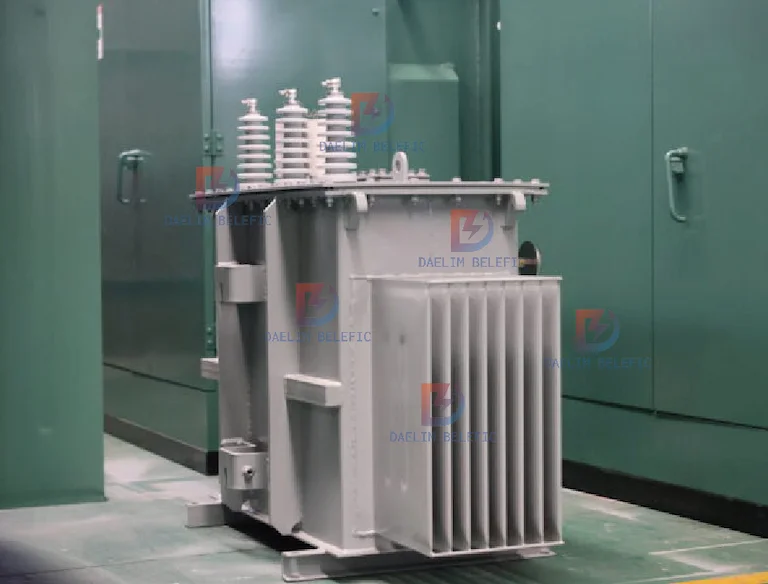
Dry-type transformers and oil-filled transformers both offer the very same goal, yet they vary significantly.
Oil-filled transformers, on the other hand, require even more frequent upkeep than dry-type transformers. The oil needs to additionally be tested to ensure that there are no contamination concerns. The dry-type is extremely resistant to chemical pollutants, so it won’t need to be taken down every single time a little accident takes place.
A cooling tool is needed to avoid the transformer from overheating and possibly creating a fire or explosion. When transformers are under load, overheating is unavoidable. It needs to be attended to since temperature level surges are not acceptable when transformers function. Air is made use of to cool dry-type transformers, whereas oil is made use of to cool oil-filled transformers.
Specific public structures go with dry-type transformers over oil-filled ones to minimize fire threats. The liquid made use of in oil-filled transformers can conveniently stir up, presenting a risk to the building’s passengers. This fluid can leakage, seep or come to be contaminated, producing a harmful circumstance. Consequently, oil-filled transformers are normally limited to outdoor usage.
The overall load ampacity of a transformer specifies the amount of amps it can deal with. It is considerable because it helps in determining the transformer dimension called for to suit a particular load.
Compute Load Ampacity with This Formula:
KVA x 1000/ The line to Line voltage
To find the current for a 2000 KVA transformer, you can compute by multiplying 2000 by 1000 and then separating the outcome by 240 volts.
( 2000 x 1000) 240v.
The transformer’s lots ampacity is 8,333 amps, calculated from the 2000 KVA ranking and 240V single-phase voltage.
To differentiate in between an oil-cooled and dry 3000 kVA transformer, it is very important kind to select.
For a more transparent comparison, below are the set of considerations to check in choosing between oil-cooled and dry-cooled transformers.
Dry-type styles are generally easier to preserve and less susceptible to contamination contrasted to layouts that use fluid for air conditioning.
Dry-type transformers can have higher operating costs because the maintenance and replacement of damaged components can be costly. Additionally, dry-types have shorter lifespans and lesser recycling possibilities in comparison to oil-types.
The power it is expected to carry and the voltage for which it is used determine the cable size. During expansion, the voltage drop that might flow from one end to the other must often be kept within limitations. As a result, cables must be chosen with these factors in mind on both the HV and LV sides.
The capacity of the cable to transport current:
The full load current of a transformer is computed as follows
Kilovolt-Ampere (kVA) is the unit of measurement used to grade transformers. The kVA of the load determines the size of the transformer. In many cases, the load’s power requirements are equivalent to the transformer’s rating stated in VA or kVA. A 1KW (1000 Watt) load, for example, would need a 1kVA transformer with a unity power factor.
Copper Losses are determined by the current that flows through transformer windings. Whereas Iron Losses, Core Losses, and Insulation Losses are determined by voltage.
You can size up a transformer by following the formula for kVA or kilovolts-amper computation. Understanding this formula is necessary, as requirements are often expressed in other units like amperes. Make sure to get the correct given values and refer to the computation method below:
1. Determine the Load Voltage (Volts)
2. Check the load current (Amperes)
3. Then, check line voltage
4. Afterward, verify your use, whether it is single or three phases. Below is the respective formula to refer to:
Single-Phase: Volts x Amps /100 = kVA
Three-Phase: Volts x Amps x 1.732 /100 = kVA
The values you get for kVA are rounded up to the nearest standard manufacturing ratings. Besides, a higher rating than the actual requirement is advisable to handle the current load and possible future additions. You can always consult with your trusted manufacturer or professionals if further verification is necessary.
The continuous expansion and contraction of the steel core inside the transformer causes it to hum. The quantity of flux determines core expansion, determined by the applied voltage and the number of turns in the transformer coils.
The power factor of the input and output supplies is always the same. And the power factor of the input supply does not affect the losses in the transformers.
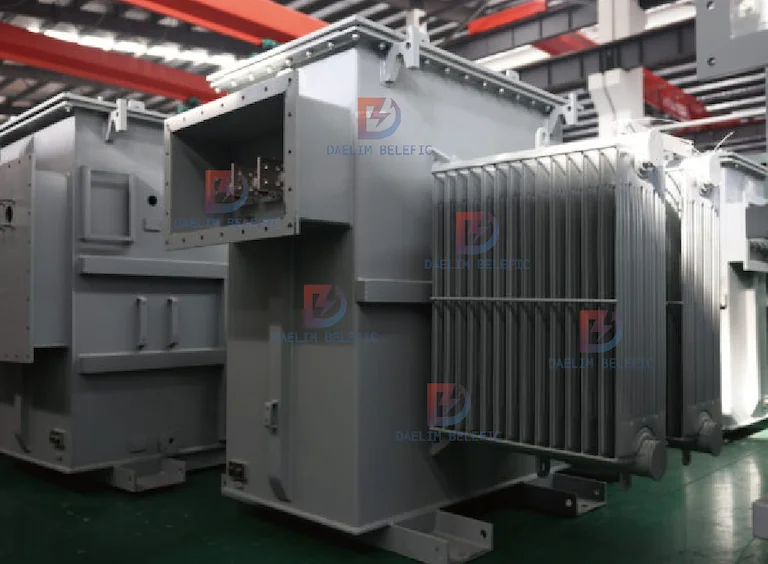
Transformers are constructed using higher-grade steel (usually Cold Rolled Grain Oriented –CRCO) to decrease core losses.
In electric terms, “3000 VA” means 3000 Volt-Amps. This is an unit of measurement used to describe the obvious power in an electrical system, which is the item of the voltage and present. For a totally repellent lots, where the existing and voltage are in phase, 3000 VA corresponds to 3000 watts or 3 kilowatts. Nonetheless, in functional applications entailing rotating present (AIR CONDITIONER), such as with electric motors or transmission lines, the situation commonly includes reactive power as a result of phase differences beteen existing and voltage. This discrepancy introduces the concept of power aspect, which suggests how much of the power is in fact being made use of to do work versus being saved temporarily in the system.
Take into consideration a transformer that supplies an output of 100 volts AC and can deliver a maximum current of 3 amps. The transformer’s score in Volt-Amps would be calculated as 100 volts multiplied by 3 amps, yielding 300 VA. This basic computation aids clarify just how makers establish the ability of electrical tools and the significance of the VA ranking in making certain adequate power supply without overwhelming the system.
Transformers, essential parts in electric distribution, are typically ranked in VA (Volt-Amps) or kVA (kilovolt-amps). This score, commonly found on the transformer’s nameplate, signifies the maximum voltage and current the transformer can tkae care of successfully without surpassing its design limitations. The secret to this capacity hinges on taking care of tje heat created by the transformer’s core and coil losses– technically described as constant (core) and variable (ohmic) losses. Reliable air conditioning systems play a crucial role in allowing higher ratings by effectively dissipating this warm.
Regardless of the actual power moved to the tons hing on the power aspect (which can theoretically be zero in some very responsive systems, leading to no actual power transfer), transformers are still ranked based on their overall possible result in VA. This is because, no matter the power factor, the transformer should deal with the full obvious power to operate safely and effectively.
Understanding the VA rating of transformers is critical for electrical specialists to ensure safe, effective, and sturdy setups that can handle the desired tons without the danger of getting too hot or damage. This expertise aids in choosing the excellent transformer for specfic applications and in settling electrical performance problems.
Electrical transformers significantly influence our everyday lives, especially in creating and delivering electricity to your household appliances. You can improve the efficiency and longevity of your devices by selecting the appropriate transformer. The 2000 kVA Transformer is no different. For more information about transformers, please visit Daelim. Everything there is to know related to transformers, you are likely to find on their website.
This sums up all the things you need to know about 3000 kVA transformers. Selecting the suitable rating of the transformer can be a daunting task. However, making the right choices is a worthwhile investment that can save you from tons of expenses and inconvenience.
Ultimately, the product should come from a reputable brand backed by years of experience and expertise like Daelim. The cost should not compromise the quality of the product. Excellent product quality is just as crucial as picking the correct product itself.
Daelim Belefic is the leading brand of transformer manufacturer in China. With more than 15 years of good reputation, their brand is recognized both domestically and globally. If in search of a quality 3000 kVA transformer or other electrical components, look no further; Daelim has it.
Daelim is your innovative and reliable partner for electrical products and solutions. Contact us today for further inquiries or collaboration.
ELECTRIC, WITH AN ENGE-- DAELIM BELEFIC
After filling in the contact information, you can download the PDF.